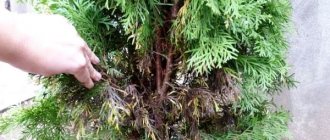One of the brightest representatives of the cyanaceae family is phlox. These are tall, erect shrubs that can reach a height of up to 1.5 meters. This group includes 85 species, of which approximately 40 are grown in ornamental gardening. Most types of phlox are perennial, but annuals are also found. Single-season varieties include Drummonda, Starry Rain, and Twinkling Star. Perennial varieties are represented by paniculate and subulate phlox. The name was originally given to the plant by Carl Linnaeus in 1737 for the very bright flowers of some species. The homeland of phlox is North America, whose harsh climate has made the plants unpretentious and tenacious.
Fragrant, varied palette of colors, lush inflorescences bloom in the spring and delight others with their splendor until the first frost. In addition, flowers are great for cutting and last a long time in bouquets or floral arrangements. The flower has one pistil and five stamens. The color of the corolla is very different - from pure white and white with eyes, strokes, dots and shadows, to crimson-red-purple and dark purple-violet.
Depending on the original habitat of wild phlox species, their appearance, ecological and morphological features may differ. All these plants with straight, rigid stems, fragrant flowers of various colors, petal shapes are divided into 3 groups: shrubs, creeping, loose-turf. The choice of planting location for these plants is definitely the sunny side of the site, limited by a fence on the north side. If the phloxes are a shade-loving variety, then you can plant them under trees and shrubs.
In this article we will look at the main diseases of phlox (with detailed photographs) and their treatment.
Diseases and pests of phlox: photos, how to treat flowers
In order for phlox to bloom beautifully and profusely, gardeners will have to work hard. And the point is not even that they need to be periodically watered, fed, weeded and loosened. Often phloxes are affected by diseases, or they may be attacked by pests
.
If you don’t start fighting them in a timely manner, the flowers will begin to wither, the color of the petals will fade, and these plants will die fairly quickly. Contents of the article:
Fungal diseases of phlox and their treatment Rust Septoria Powdery mildew Phoma Verticillium wilt Gray rot Viral diseases of phlox and methods of combating them Ring spot Curly stripe Necrotic spot Leaf curl Variegation Rattle Threadiness Mycoplasma diseases of phlox Jaundice Phytoplasmosis Diseases arising due to violation of conditions cultivation If the foliage of phloxes dries If the stems of phloxes crack The main pests of phloxes Nematode Slobbering pennies Slugs Cutworms Cruciferous black flea beetles Bronze beetle and May beetle Prevention of diseases and pests
Let's sum it up
Diseases of phlox flowers are transferred to a clean garden, usually with the arrival of a new specimen. An outwardly healthy plant can carry fungal spores, infect nearby growing flowers and gradually, instead of beautiful, strong bushes, the plants remain withered from below, with dark spots on the leaves and poorly flowering inflorescences. Viruses and fungi cause terrible phlox diseases. The treatment will take a long time, and not always effective: you will have to cut out the affected bush at the root.
Similar articles:
Ways to combat mole cricket insects, detailed...
A detailed description of the flowers that can be planted on…
What varieties of garden chamomile to plant and how to care for them...
Fungal diseases of phlox and their treatment
Fungal diseases damage phlox most often, while pathogenic fungi feel most comfortable in moist, acidified soils.
Fungal diseases of phlox - video
Rust on phlox
The causative agent of this disease is fungi of the genus Gymnosporangium
, they appear on flowers by mid-June. The main symptom of phlox rust disease is the appearance of brown spots with a reddish tint.
If the fight is not started on time, the flower weakens and begins to wither, its appearance deteriorates.
. And under certain circumstances, phlox may even die.
If the damage to the flowers is minor, then the damaged foliage should be removed and burned, and the diseased plants should be sprayed with a solution of copper oxychloride or a working liquid based on ferrous sulfate. You can also treat phlox against rust with Topaz fungicide. If the treatment does not produce results, then the diseased phloxes should be pulled out and burned outside the site.
Phlox diseases
Septoria phlox
Septoria disease is caused by the fungus Septoria phlogis. The main sign of phlox disease with septoria is the appearance of gray spots, which gradually become yellow with a red border.
. If treatment is not carried out, the affected foliage gradually dies, and diseased plants wither.
To cure plants, it is recommended to spray them with a solution of iron sulfate or HOM
. Treatments are carried out twice from the moment septoria appears, the interval between sprayings is 12-14 days.
Powdery mildew on phlox
This disease usually appears on the foliage of flowers in August. Powdery mildew is caused by the fungus Erysiphe cichoracearum
.
First, light-colored spots appear on the foliage and shoots, which grow over time, and a gray coating appears on the reverse side. As plaque and spots grow, the foliage shrinks and withers, and the phlox begins to grow more slowly.
This disease manifests itself faster if the plantings are thickened or the soil is waterlogged.
Important!
To prevent disease or treat diseased flowers, phloxes are sprayed with a 1% solution of soda ash. Flowers are treated at intervals of 6-8 days. You can also use Topaz fungicide to treat phlox against powdery mildew.
What to do if phlox gets powdery mildew
Phomasis in phloxes
The disease is caused by the fungus Phoma betae
. If the foliage at the bottom of the plants begins to curl and turn yellow, this means that the phlox is affected by phomosis. The stems at the base begin to darken and crack, becoming brittle.
With timely treatment, phlox can be saved from phomosis
. To do this, flowers are sprayed with Bordeaux mixture up to 4 times per season with an interval of 1.5 weeks.
Verticillium wilt of phlox
The causative agent of the disease is the fungus Verticillium
. The root system of phloxes is primarily affected by this disease. Then the functioning of the vascular system begins to be disrupted. As a result, perennials wither.
Plants can be saved at the initial stage of disease development by spraying and pruning all damaged parts.
There is no effective treatment for Verticillium wilt.
. If the flowers are slightly damaged, you can remove all the stems at ground level, then the soil is watered with a working liquid based on the bactericide Gamaira and you need to wait until new healthy shoots appear.
If the roots of phlox are severely affected by verticillium, then the plants should be removed along with the root system and burned, and the soil should be spilled with a disinfectant solution.
Gray mold or botrytis on phlox
Gray mold or botrytis is caused by the fungus Botrytis cinerea. This disease develops faster in rainy, cool weather.
The main symptoms of gray rot on phlox are the appearance of brown spots on the above-ground parts of the plants, which gradually grow. If gray rot is not treated, it quickly descends to the roots of the flowers.
. As a result, the phloxes wither.
What to do if phloxes get gray rot
Treatment will be effective only at the early stage of development of gray rot on phlox: for this, the flowers are sprayed with a working liquid based on the biofungicide Alirina or Gamaira
. In total, up to three sprayings are carried out during the summer.
On a note!
Almost all fungal diseases are treated with the same drugs - these are modern fungicides, for example,
Strobi
,
Topaz
,
Profit Gold
,
Thanos
,
Vitaros
,
HOM
and others.
You can also use biological products: Fitosporin
,
Glyokladin
,
Alirin
,
Gamair
and other similar products; many of them have already been created.
Nematode
The most dangerous pest of phlox is the phlox race of stem nematode Ditylenchus dipsaci var. phloxidis. This is a small translucent worm that settles mainly in the stems of phloxes and feeds on their juice. The development cycle lasts from several days to several weeks, depending on air temperature and humidity. The optimal temperature conducive to the reproduction of nematodes is 18-24C, and at temperatures above 40C the nematode and its eggs die. Therefore, today the main method of combating nematodes is thermal. But this method is not suitable for phlox; its divisions do not survive after treatment with hot water.
The insidiousness of the disease is that in the early stages it is quite difficult to distinguish a diseased plant from a healthy one; signs of nematode damage are clearly visible only in late June - early July. The main symptom is the threadlike appearance of the apical leaves, thickening of the stems, the plant becomes as if squat. Sometimes diseased phloxes even bloom, but the inflorescences look rather ugly. If a nematode infection is detected, first of all, it is necessary to avoid watering the plants from above; it contributes to the rapid spread of the disease, especially in warm weather.
A severely affected plant dies. Not only phloxes, but also other plants suffer from stem nematodes. In nature, the nematode infects 400 plant species and has powerful digestive glands. In general, the nematode is the scourge of phlox. Developers of plant protection products have not yet proposed anything radical to combat this disease in private farms. Nematicides approved for use on farms are so dangerous that I won’t even give their names, so as not to take it upon myself.
In the literature, it is recommended to cut the upper parts of the shoots in May to improve the health of collections and save valuable varieties. Current research allows us to conclude that early spring cuttings or harvesting cuttings in the fall in order to improve the health of varieties should be carried out at a soil temperature of less than 10C. Analyzes of phlox stems for nematodes in the spring show that there are no nematodes yet in stems 5 cm high. The nematode is already present in the lower part of the stem at a height of 6-7 cm, but is not yet present in the apical part. At this altitude and soil temperature below 10C, you can cut the tops of phloxes in the spring to preserve the variety and get rid of the nematode. When the stem height is 9-10 cm, the nematode has already reached the top of the phlox.
The most effective way to combat nematodes is manual culling of plants. Inspect your plantings regularly; if you see one or two diseased stems in the bush, immediately break them as close to the roots as possible, and into the fire.
Peas, mustard, parsley, dill, marigolds, and calendula are trapping plants. They accumulate nematodes. Alternate planting phlox and marigold. In the fall, carefully dig up the marigolds with roots and burn them. It’s even better to sow dill between phloxes; infection with nematodes and other diseases is sharply reduced. Dill can be eaten or the seeds collected from it; the nematode does not harm people. Weeds are nematode reservoirs, so try to keep dandelion, sow thistle, nettle, and woodlice out of phlox plantings. Slugs eat diseased leaves and secrete nematodes.
The nematode does not live in the ground. Its larvae are surprisingly tenacious. They overwinter in renewal buds, at the base of shoots, in rhizomes and in dry plant debris. Therefore, in the fall you need to carefully clean the beds. In spring, nematodes penetrate the growing stems and rise up with them, infecting the plant.
Viral diseases of phlox and methods of combating them
These perennials can also be affected by viral diseases that are practically untreatable
. Therefore, it is necessary to carry out a number of preventive measures to prevent the appearance of such diseases on phlox.
Phlox ringspot
This disease is caused by the Tomatto ringspot
. The first signs of ring spot disease in phlox are the appearance of spots and rings of light colors on the foliage of the perennial. With ring spot, not only the color of the above-ground parts changes, but the disease can also cause deformation and wilting of stems and foliage.
What does ring spot look like - photo
Ring spot cannot be treated, so affected plants are pulled out by the roots and burned outside the site
. And the soil should be shed with a solution of formaldehyde or Beliz, which contains chlorine.
Important!
They transmit ring spot nematodes. Therefore, at the first signs of disease, flowers should be sprayed against these pests.
Curly stripe
The disease is caused by the Tobacco rattle virus
. Moreover, it damages many different plants, including phlox. The first signs of curly striping on phlox are the appearance of an uneven mosaic pattern on the leaf blades of flowers.
Very quickly, the mosaic on the foliage gives way to the appearance of spots of different sizes, and the damaged foliage becomes deformed.
This viral disease cannot be cured, so diseased flowers are uprooted and burned.
Necrotic spotting
This disease is caused by one of the strains of the cucumber mosaic virus.
. As a result, small brown spots appear on the foliage of the perennial, which grow over time and merge with each other. Sick plants quickly wither.
Necrotic spotting on phlox cannot be cured, so diseased plants are simply destroyed and the soil is disinfected.
All garden equipment should also be disinfected.
Phlox leaf curl
The disease is caused by the Phlox necrosis vien virus, otherwise called vein necrosis. The first signs of phlox leaf curl are the appearance of dark spots and small tubercles on the upper side of the foliage.
. Flower shoots become deformed and twisted.
If phloxes show signs of leaf curl, the plants should be removed and destroyed, as the disease cannot be treated. The soil is spilled with a formaldehyde solution, and neighboring flowers are treated with Bordeaux mixture.
Variegation
This disease is caused by the rhizome mosaic virus. Signs of phlox variegation disease appear at the moment the buds open - a large number of light stripes appear on the petals.
The photo shows the variegation of phloxes
The phloxes themselves can remain quite strong, but it is still better to destroy all diseased plants, since the causative agent of the disease is quickly transferred to neighboring plants. The soil on the site must be disinfected using formaldehyde or Whiteness.
Rattle
This disease is a type of mosaic disease and is caused by the ringspot virus. At the same time, spots of uneven shape and light color appear on the foliage. Gradually, dead areas appear in place of the spots, and the flowers themselves die.
What does rattling phlox look like?
It is impossible to treat phlox disease from rattling, so diseased perennials are simply destroyed
. The carriers of the pathogen are nematodes, so after destroying diseased plants, all healthy ones are sprayed with insecticidal preparations against pests.
Threadiness of phloxes
This disease can develop against the background of infection of flowers with cucumber mosaic. Nematodes are also carriers of this disease.
. When phlox gets threadlike, the leaf blades become narrower than usual and begin to curl and deform.
The stems become fragile, and the plants themselves stop growing and buds do not form on them.
Important!
At the first symptoms of threadiness, the plants must be destroyed and the soil must be disinfected.
Features of reproduction
In one area, phlox can live up to 10 years. However, after 4-5 years after planting, they need rejuvenation. This is due to the fact that old bushes begin to become bare, susceptibility to disease increases, and the inflorescences become smaller.
Planting by seeds
Phlox is less often propagated by seeds than other crops, since almost all modern varieties are complex hybrids. They can self-pollinate and reproduce by self-sowing. The newly appeared flowers differ from the parent ones. They have their own unique coloring.
In late autumn, you can see seeds in boxes on the ground. It is enough to cover the seeds dried in a container with a 2 cm layer of sand mixed with soil. With the arrival of early spring, the emerging sprouts need conditions for strengthening; a greenhouse is best suited. Only when stable warmth arrives are the flowers planted in a permanent place.
Reproduction by dividing the bush
In autumn or spring, it is necessary to dig up the bush completely and divide it into parts. Moreover, each of them must have its own root shoot. The length of the shoots before planting is shortened to 10 cm. This will eliminate unnecessary expenditure of energy in new plants.
Related article:
Lilac - care in autumn and preparation for winter: pruning and covering
Cutting method
The most suitable time for cuttings is either early spring, when there are no buds, or autumn, when flowering ends. To ensure that the cuttings take root well, several shoots with 2-3 internodes are cut. All leaves are removed from below (up to the first node). To plant a cutting, you need to stock up on wet sand mixed with humus. The shoots in the pot are covered with glass jars, transparent bags, etc. This is necessary to create a greenhouse effect. The cuttings take approximately 3 weeks to take root. It is necessary to remember about daily ventilation and maintaining humidity.
Reproduction by stem layering
The perennial reproduces well by layering. Under the flower, at a depth of about 4 cm, small grooves are made. They moisturize well. Stem cuttings are placed in the recesses, lightly sprinkled. The top of the stem should be on the surface of the soil. After some time, the shoots grow their own roots. All that remains is to separate them and transplant them to a new place.
Mycoplasma diseases of phlox
These types of diseases are caused by microscopic pathogenic organisms that are a cross between viruses and bacteria.
Phlox jaundice
This disease is the most famous of the mycoflame diseases and disrupts the development of these perennials.
The main symptoms of jaundice in phlox:
- the buds change color, becoming green and more like foliage;
- Phlox stops growing.
This disease is transmitted by cicadas
. Therefore, after removing the affected flowers from the site and disinfecting the soil, healthy plants are sprayed against pests.
In the photo there is a cicada
Phytoplasmosis (stolbur) of phlox
Stolbur disease is similar in its symptoms to some viral and fungal diseases - plants stop developing, do not produce buds, the color of the foliage becomes paler, small spots appear on the leaf blades, and the stems become thinner and become spindle-shaped.
Reference!
Many cultivated plants can get sick with stolbur: tomatoes, potatoes, eggplant, peppers.
Phloxes suffering from phytoplasmosis are removed, since the disease cannot be treated
.
Then they spill the soil with disinfectants and treat all healthy plants with preparations against cicadas, and in order to strengthen the immunity of phloxes, they are fed with fertilizers containing potassium and phosphorus.
Jaundice
A rather rare, but still common phlox disease. In this case, fungal spores are transmitted by insect pests, usually through aphids or cicadas. Symptoms of jaundice are the following: slow growth of the flower, change in color of its foliage to yellow. Interestingly, the inflorescences acquire, on the contrary, a green tint.
This disease is caused not by fungi or viruses, but by mycoplasmas - something in between the two microorganisms listed above. Older phloxes are more likely to catch jaundice; young plants rarely get sick. Mycoplasma diseases, like viral ones, cannot be treated; only competent and timely prevention can help against them.
What to do
Unfortunately, a flower infected with jaundice cannot be saved: it must be dug up and destroyed away from the garden. However, preventive measures can help: spraying with Fundazol in the spring, proper care, replanting once every 4 years when growing phlox indoors.
Diseases arising due to violation of growing conditions
Sometimes these flowers can dry out and wither not only because of disease. Often the cause of death is improper care of phloxes.
If phlox foliage dries out
In miserable dry summers, phlox may lack moisture. If the irrigation regime is not followed, the leaves of the phloxes begin to fall off from the bottom. This reduces the area from which moisture evaporates. As a result, this flower will calmly endure a period of drought.
If the irrigation regime is restored, the phlox will be restored and the foliage will not fall off.
If phlox stems crack
In early June, cracks appear on the lower part of the phlox stems, which can be very long. They can heal over time.
Such cracking does not particularly harm the health of phloxes, however, damaged shoots weaken and can break from the wind or under the weight of blooming inflorescences.
Reference!
Cracking of phlox shoots can occur when the soil is acidified or when watered with cold water. Therefore, it is enough to add lime to the soil and water only with warm water.
Application in landscape design
Due to the variety of shades of flowers, compactness of the bush and undemanding nature, awl-shaped phlox is actively used in landscape design. This flower in the garden can be not only a background, but also an accent in the center of any flower bed.
The plant is suitable for creating low borders along paths in the garden.
It is used in rock gardens, rockeries and mixborders.
The culture is in perfect harmony with the stones.
Phloxes look quite colorful next to carnations, periwinkles, and sedums.
Knowing how to grow phlox subulate, you can get a beautiful plant that can decorate your garden plot, forming a continuous carpet on the lawn. A bright and bewitching flower will cause a lot of admiring glances and pleasant compliments.
Main pests of phlox
When grown in garden beds, this flowering perennial can be threatened by numerous pests, many of which emerge from their hiding places as the weather warms up in early spring.
Phlox pests - video
Therefore, it is at this time that it is necessary to carry out preventive spraying of phloxes in order to protect them from attacks by “harmful” insects.
Nematode on phlox
This pest is one of the most dangerous for phlox - it not only damages plants, but is also a carrier of many fungal and viral diseases that will damage weakened phlox bushes.
Small white worms penetrate inside the shoots and feed on the tissues of the stems. The edges of the foliage of damaged phlox become wavy, the damage also affects the peduncles with blooming flowers - they become deformed and become twisted.
Nematode on strawberries: how to recognize the pest and how to fight it
It is very difficult to cope with these pests, so it is easier to destroy damaged perennials. And healthy plants must be sprayed with Actellik, Aktara or Nematophagin for preventive purposes.
Slobbery Penny
The larvae of this pest appear on phlox in late spring - early summer and are very voracious. They feed on the cell sap of flowers. The main sign of the appearance of these “harmful” insects on phlox is the appearance of a trace similar to saliva on the foliage.
In the photo there is a slobbering pennice
If the number of insects is small, they are usually collected by hand. And if the pest spreads strongly, the phloxes are sprayed with a working fluid based on Fufanon. Usually no more than 3 sprayings are carried out during the summer season with a break of 12-14 days.
Slugs on phlox
These mollusks feel good in damp, cool weather, when they actively eat the shoots and foliage of phlox. After them, a large number of holes and grooves remain in the leaves and stems, which is the main symptom of the appearance of slugs on flowers.
On a note!
Slugs are most active at night, and during the day they cannot be seen on flowers.
To prevent these mollusks from appearing on phlox, the foliage of the perennial is powdered with tobacco or wood ash.
Cutworm caterpillars
These caterpillars are quite voracious, and their main food is young foliage and stems of phlox.
They appear on phlox in May, and over the summer they can completely eat these flowers if you do not fight them. And if the summer season is warm, the pest will actively reproduce.
How to deal with armyworm
If there are still few pests on the flowers, then it is easier to remove them from the plants manually. And when the colony of these caterpillars grows, the phloxes are sprayed with a solution of Aktara or Aktellik.
Cruciferous black flea beetles
These small bugs are painted black, and their body size is no more than 3 mm
. They emerge from their winter shelter in the spring, when the air temperature rises to +14+16 degrees Celsius. They actively devour the top layer from the leaf plates, as a result, quite large holes remain on the foliage.
The photo shows a black cruciferous flea beetle
Bugs usually settle in entire colonies, so they cause great harm to phlox. To combat cruciferous flea beetles, you should dust the foliage with fluff lime or wood ash. Usually up to 4 treatments are carried out with an interval of 1.5 weeks.
Bronze beetle and chafer beetle on phlox
People call this pest the May beetle, because the mass emergence of these insects occurs in May.
.
In the garden, this beautiful bug with a shiny greenish color on the top cover brings a lot of benefits. But it only causes harm to phloxes - it eats pollen from opening buds, eats flower petals and their peduncles, and as a result, phloxes often die.
While there are few of these beetles on flowers, they can be picked by hand
. And when there are too many May beetles, the flowers should be treated with insecticidal preparations - Decis, Actellik or Aktara.
Description
In North America, considered the birthplace of the perennial phlox subulate, it is called creeping carnation. Low stems (17-20 cm), intertwining with each other, spread along the ground and form a fancy carpet. Small and hard pointed leaves, 2-3 cm long, are attached to numerous stem nodes. Flowers, up to 2.5 cm in diameter, can occur one at a time, but usually form inflorescences of 5-7 pieces. The culture amazes the eye with a variety of colors and shades. It usually blooms twice a year. At the end of spring and beginning of summer, as well as in August-September, although not so lush.
Prevention of diseases and pests
To prevent the appearance of diseases and pests in flower beds with phlox, a number of preventive measures should be taken that protect the flowers for a long time:
- Fungal diseases usually begin to develop when the soil is too wet and plants are planted too close to each other. Therefore, flowers need to be planted at a sufficient distance from each other, and watering should be carried out only as the top layer of soil dries.
- Fungal diseases of phlox develop better in acidic soil; to deoxidize the soil, you can sprinkle it with fluff lime.
- We should not forget about loosening the soil in flower beds. It is especially important to carry out this procedure in the spring and before the onset of cold weather, when pests begin to hide in the soil before the winter period.
- In the process of preparing the garden for the winter period, it is necessary to remove from the territory all plant debris and fallen leaves, in which insects can also hide from the cold.
- In the spring, for preventive purposes, the flower garden should be treated with fungicidal and insecticidal preparations. This treatment is also carried out in the fall to destroy pests and pathogenic microorganisms before they hide in the soil for the winter.
- Phlox also requires a lot of minerals during flowering, so you should feed the flowers with special mineral complexes as a preventive measure.
In the process of caring for phlox, it is important to carry out preventive measures to protect flowers from diseases and pest attacks.
. If symptoms of diseases or the appearance of “harmful” bugs appear on the plants, then the fight against them must begin as early as possible. Otherwise, great damage may be caused to the flowers.
Further flower care
Caring for styloid phlox consists of the following simple procedures:
- Very moderate watering. Usually one watering per week is enough (4–5 liters per bush). During drought, the bushes are moistened after 2–3 days. Use only lukewarm water, otherwise the stems will crack.
- Weeding and loosening. Weeds are removed regularly and the soil is loosened after each watering.
- Feeding for 1 bush: before flowering - nitrogen-containing fertilizers (urea - 10-15 g, etc.);
- during budding and flowering - phosphorus-potassium complexes (superphosphate - 15-20 g, wood ash - 35-40 g, etc.);
- in mid-summer - any complex mineral fertilizers for flowering garden crops (amount according to instructions).
The best fertilizer for phlox is considered to be an infusion of wood ash. Add 0.3 kg of ash to 2 liters of hot water, boil for 7–10 minutes, cool, and filter. Dilute in a ratio of 1:10 and water the bushes (1–2 liters per plant).
Video: caring for styloid phlox
Stem cracking
This is not a disease, but a physiological phenomenon inherent in some varieties. The cause of cracking is the rapid growth of stems. The stems can crack when high doses of nitrogen are added, the soil is acidified, or the weather is too damp and at the same time warm.
First, vertical cracks appear on the stems, and then the shoots become flat and lie down, unable to withstand the weight of the flowers.
The disease is not contagious. Treat stem cracking with proper agricultural practices.
Interesting varieties
The phlox genus includes about 80 species of colorful summer flowers and hundreds of varieties. In gardens, paniculata phlox (flox paniculata) is usually grown, characterized by a vertical structure and a height of up to 100 cm. However, the ground cover phlox subulata (Phlox subulata), which is the subject of this article, is gaining increasing popularity. A very similar ground cover species is also Phlox stolonifera - both species bloom in late May - early June.
Inspired by the grace of perennials, botanists in the 19th century crossed wild and domesticated species, achieving new aesthetic effects. Today, advanced cultivation and crossing of phlox is carried out by the Americans and the Dutch.
Of the latest creations, the early flowering varieties of the Fabulous group with very interestingly colored flowers (Blue Dark Center, Blue Violet, Rose, White) are interesting. They bloom very early - in March. These plants bush well, maintain a compact shape, and cover the surface well.
An interesting new product is the GoldiPhlox group, which includes 5 varieties with large flowers in color: white, white-blue, red-pink and two shades of pink. These varieties bloom early and are characterized by the same height within the group.
Photo. Variety "Goldiflox pink" GoldiPhlox Pink
Varieties from the “Spring” group are characterized by large flowers of bright colors:
- “Blue” Blue – with light blue flowers;
- “Duck Pink” Dark Pink – with pink flowers;
- “Hot Pink” Hot Pink – dark pink variety;
- “Lilas” Lilac – dark pink;
- “Ash” Purple – purple;
- "White" White - white.
Photo. "Spring Hot Pink" Spring'Hot Pink
New varieties are also excellent for planting in balcony and terrace containers - single or multi-species compositions.
White, beige
White varieties are often used; they combine well with other types and are excellent for gardens and rock gardens:
- “Mashsne” Maischnee – dense bush, profusely flowering;
- "Morgenstern" Morgenstern - flesh-colored flowers with a dark eye;
- "Calvides White" Calvides White;
- “White Delight” White Delight – large flowers;
- “Amazing Grace” Amazing Grace;
- "Bavaria" Bavaria - beautiful white flowers with a blue eye.
Pink
Pink varieties are very popular. They have warm, delicate colors and look great on the edges of flower beds. Examples:
- "Camlensis" Camlaensis - large dark pink flowers;
- "Moerheimi" Moerheimi - intense pink flowers;
- "Ronsdorfer Schone" Ronsdorfer Schone - salmon-pink flowers;
- “Scarlet Flame” Scarlet Flame – hot pink;
- "Phlox trot pink" Phlox trot Pink is a new variety with very large bright pink flowers.
Purple
These varieties look very bright in the flowerbed and amaze with the intensity of the color of the flowers. Example:
- "Ash Beauty" Purple Beauty;
- "Alice Wilson" Alice Wilson.
Reds
Red cushions of ground cover phlox will look bright spots on a ridge or in a rock garden. They usually play first fiddle in flower beds.
Examples of varieties:
- "Atropurpurea" Atropurpurea - flowers are intensely dark red;
- "Temiskaming" Temiskaming - dark leaves, red-carmine flowers;
- "Red Wings" Red Wings.
Blue
Blue phlox seeds have recently appeared on the market. The most beautifully presented are 3 blue varieties:
- Emerald Cushion Blue;
- F. Wilson - a vigorous variety, sensitive to frost - requires winter shelter;
- “Blue Dac Sente” Blue Dark Center – blue-white with a dark eye.
Two-color
Two-color flowers look very interesting, with a red or coral stripe through the center of the petals:
- "Amazing Grace" Amazing Grace - white flowers with a pink-purple eye;
- "Coral eye" Coral Eye - light pink flowers with a red-coral eye;
- "Candy Stripes" Candy Stripes - two-color, white and pink flowers;
- "Nelsonium" Nelsonii - white flowers with a red eye;
- “Marjorie” Marjorie – pink with a dark pink eye.
Variegation
Variegation is the most undesirable disease of phlox, capable of destroying an entire collection in one day. The causative agent of variegation is a virus. The virus changes the color of the petals, affecting the synthesis of coloring pigments, causing the petals to become covered with radial stripes of light color.
With variegation, the pattern is asymmetrical, uneven, and located in sectors. The strokes are wider at the ends. The disease completely destroys such varietal characteristics as color, and then leads to degradation of the entire plant.
The affected bush is a source of infection. The virus is carried by sucking insects and is transmitted through sap, pollen and seeds. Soil nematodes spread the mosaic virus, but through the roots.
You can recognize the variegation of a recently acquired specimen that has bloomed for the first time by comparing the color of the flowers with photographs of a similar variety.
A virus can only be detected with 100% accuracy in a professional laboratory. Unfortunately, amateurs are limited and can only rely on observation.
It is difficult to detect variegation on white varieties that do not have an eye. If the variety is “with an eye,” then the disease manifests itself as heterogeneity of the boundaries of the eye. A careful examination reveals whitish, jerky strokes on the light part of the petal.
Recently, new, unusual varieties of phlox have begun to be sold on the market. Before you buy a new variety, check in the literature or on the Internet whether it really exists and what it looks like. Unscrupulous traders may pass off plants that have changed color under the influence of viruses or high doses of radiation as a new variety.
Such, for example, is the widely advertised variety “Russian Souvenir”. Its crumpled and deformed petals suggest a viral disease. More suspicious is the statement of the inducer of this variety that “Souvenir” does not propagate by cuttings - only by dividing the bush, because, as is known, viral diseases make vegetative propagation difficult.
There are varieties whose variegation does not have a viral cause - it is genetically embedded in them. These are variegated Darwin's Joyce, Elizabeth, the famous "Dragon" with strokes on the petals.
Genetic variegation can be distinguished from acquired variegation by the nature of the strokes. In the first case, the strokes are not expanded towards the end, they are intermittent, symmetrical, and look like speckles.
Do not confuse variegation with petal defects caused by bad weather. Plants infected with the virus have distortions already in the buds, and bad weather affects the color of only the open petals. To stop worrying, just pick a few buds and open them with your fingers. If there is no color distortion on the petals, then you can relax.
There is only one measure to combat the variegation virus: the plant is dug up and burned.
Forum: reviews, growing tips
Experienced gardeners highly appreciate the unpretentiousness and winter hardiness of moss carnation. They note the luxurious appearance of the flowering mat and recommend it for growing even on depleted soils.
Natalya admires the ease of caring for such a beautiful and fragrant representative of garden flora. While dividing the bush, she accidentally damaged several branches. The gardener decided to dig them in and received new planting material, which bloomed the very next year.
Victoria raises Native American in balcony boxes. The gardener claims that you can get a luxurious flowering pillow on a sunny balcony, the main thing is to monitor the condition of the soil and apply fertilizing.
Valeria decided to grow phlox through seedlings. She noted the capriciousness of the seedlings and their susceptibility to various diseases. But the nurtured bushes made excellent queen cells, which made it possible to quickly fill the garden with bright spots.
Nikolay works as a landscape designer. He recommends planting each variety at some distance from its neighbor. The moss carnation grows quickly and its shoots intertwine, forming a not very aesthetic multi-colored spot. Free-standing pillows look much more impressive.
Conclusion
After reading this article with bright photos, you will probably want to add awl-shaped phlox to your garden, especially since planting and caring for it is unlikely to cause any difficulties.
Landing Features
Although perennials do not require special care, certain rules must be followed when breeding them in order to achieve lush flowering.
Site selection
Phlox subulates prefer sunny places, well-drained soil. If the soil is heavy, you need to add sand.
Partial shade will also not prevent good flowering, but the humidity should be low. A wetland has a detrimental effect on flowers. But on poor, rocky or neutral soil they are quite comfortable.
Planting process
First, the landing pit is prepared. It is filled with expanded clay, humus and ash are added in small quantities. Seedlings or cuttings are dipped in the Kornevin composition and then planted. The distance between planting holes should be at least 30 cm so that each shoot has enough space to grow.
Related article:
Garden plants for the Urals
If you plant the crop in early spring, when the soil is moist, you do not need additional watering. When planting cuttings later, the soil must be moistened, observing the restrictions. Excess moisture should not be allowed. Planted cuttings require shelter for a week to root. For this it is better to use non-woven fabric.











